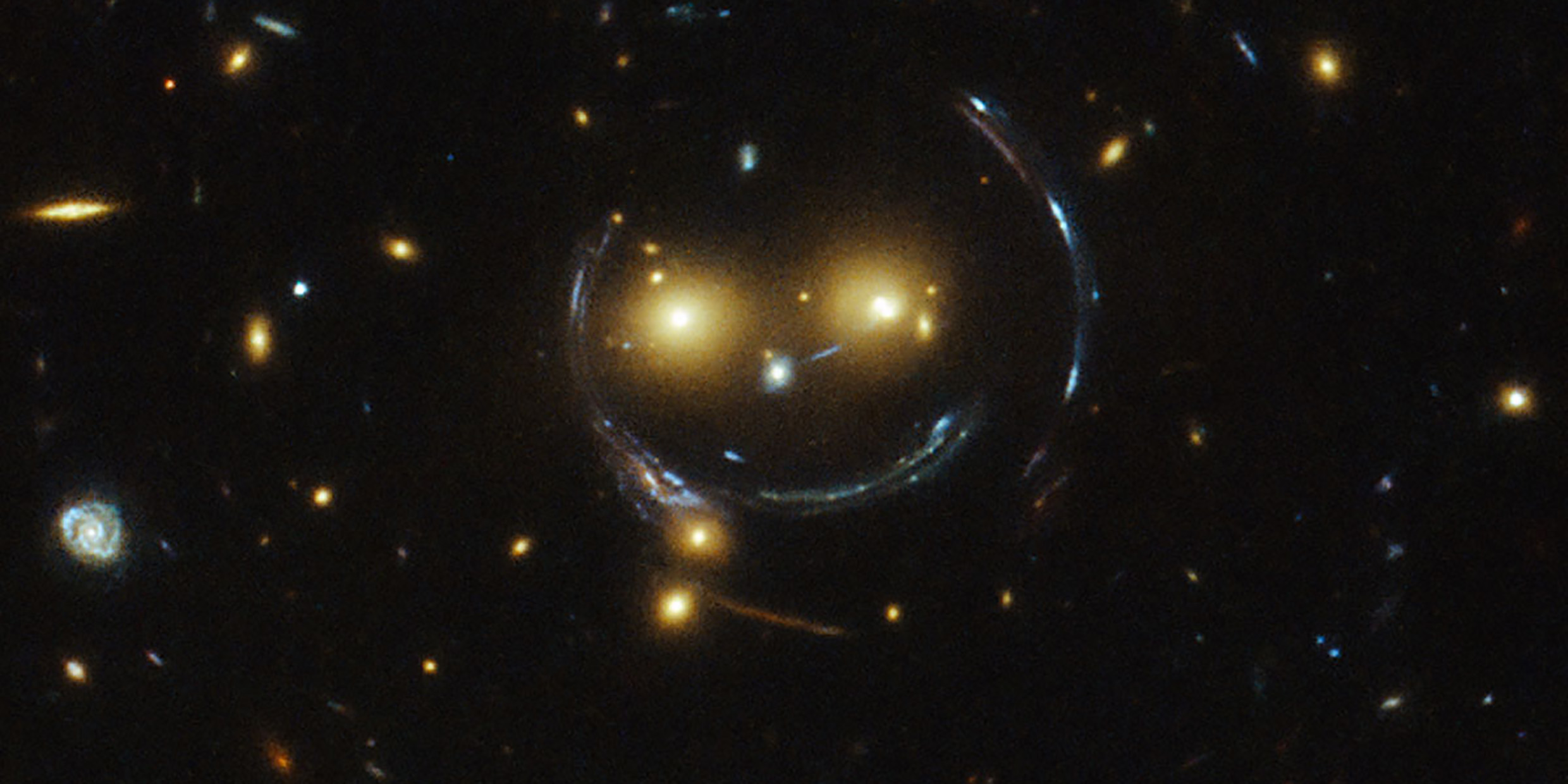Originally published 30 November 1987
It was, said Einstein, the “happiest thought of my life.”
The young physicist was sitting at his desk in the patent office at Bern when this thought occurred to him: If a person fell freely from the roof of his house, he would not feel his own weight. While he was falling it would be — at least in his immediate surroundings — as if there were no gravity.
For example, if our plummeting person released an apple from his hand, the apple would not fall; or rather, since apple and human are falling together, the apple would stay near the hand. If our observer could see no part of his environment except the apple, he might reasonably conclude that he is at rest in a place where there is no gravity — that is, where apples don’t fall.
Of course, his inevitable collision with the ground would disabuse him of his fallacy. And the violence of the impact might suggest that Einstein’s happiest thought was not so pleasant after all.
But the thought was indeed a happy one, for it led Einstein to a new theory of gravitation, called general relativity. In the theory, space and time are bound up together in a continuous fabric of “spacetime.” The presence of matter imparts a local curvature to spacetime, in much the same way that a man standing on a trampoline causes the originally flat fabric to sag. It is the curvature of spacetime that gives rise to the effect we call gravity.
A beautiful theory
So beautiful is the theory that physicists have generally believed it to be true, even though it is difficult to test. In ordinary experience, differences between the predictions of Einsteinian relativity and Newton’s theory of gravity are immeasurably small. But on the scale of the universe the differences can be considerable. Many of the grandest concepts of contemporary science — the Big Bang, black holes, the fate of the universe — are based upon general relativity.
One of the more intriguing predictions of general relativity is the gravitational lens.
In Einstein’s theory, light rays follow curved paths in curved spacetime. Very massive objects, such as galaxies or clusters of galaxies, can significantly alter the curvature of spacetime in their neighborhoods. These regions of “warped” spacetime can act like lenses, bending light rays and forming curiously distorted images of distant sources of light.
In recent months, astronomers have made a number of observations that seem to confirm the idea of a gravitational lens. In several cases, they have observed close pairs of virtually identical quasars. (Quasars are very bright sources of light far out in space, possibly corresponding to the bright nuclei of young galaxies.) It is widely assumed that the paired quasars are actually multiple images of the same distant object, formed by the lensing effect of a galaxy or galaxies lying between us and the quasar.
Even more exciting is the discovery of “luminous arcs” in space.
In January of this year, astronomers Roger Lynds and Vahe Petrosian serendipitously discovered two perfectly geometrical arcs of light, each about a quarter of a circle, that seemed to lie near clusters of galaxies billions of light-years from Earth. Nothing like them had been observed before. At first, they seemed to defy conventional explanation.
Now, the two astronomers have become convinced that the arcs are the effects of gravitational lenses. In each case, the gravitational influence of a cluster of galaxies is bending the light from an even more distant galaxy that lies behind the cluster, smearing the light into a circular arc, in the same way that a glass lens (say, a clear glass decanter of water) can distort the image of a candle flame. If this explanation of the arcs holds up, it will be a stunning corroboration of Einstein’s theory.
Einstein’s ring
A more spectacular confirmation of general relativity may be forthcoming. If a distant light source (a galaxy, for example) were lined up precisely with an intervening mass of appropriate symmetry (a galaxy or cluster of galaxies), the light of the distant source would be distorted into a complete circle. What one might then see in space is a galaxy or cluster of galaxies enclosed within a ring of light!
It would be exciting to discover such a ring, if for no other reason than the breathtaking beauty of the effect. What is at stake is not so much the confirmation of a particular theory of physics, as confirmation of the ability of the human mind to understand the ordering principles of the universe.
Einstein once said that the most incomprehensible thing about the universe is the fact that it is comprehensible. There is surely no deeper mystery in nature than the congruence of the mind and the world, a congruence so remarkable that a patent clerk/physicist sitting at his desk can be led by an apparently frivolous thought about a man falling from his roof to a comprehensive theory of space, time, and gravity.
The theory of general relativity, at the moment of its inception, had no observational foundation. What compelled the attention of physicists was the beauty of the theory, its internal consistency, and the grandness of its vision. It seemed almost inconceivable that so marvelous an invention of the human mind might not be in harmony with the world.
It is hard to imagine a more dramatic demonstration of the mysterious convergence of theory and nature — and of the perspicuity of Einstein’s happiest thought — than the discovery in space of that most improbable sight, a galaxy wreathed in a circle of light.
With the improvement in astronomical imaging in the decades since this essay was published, astronomers have discovered many examples of gravitational lensing, providing stunning confirmation of Einstein’s ideas on gravity and spacetime. ‑Ed.



